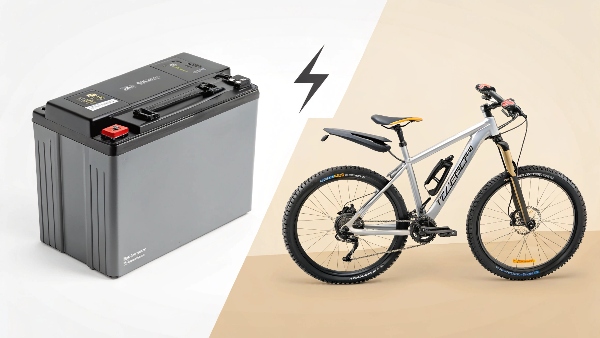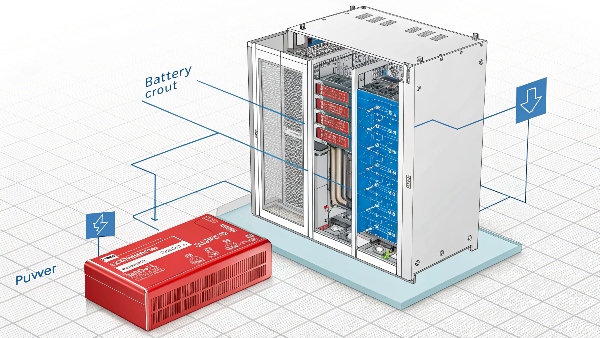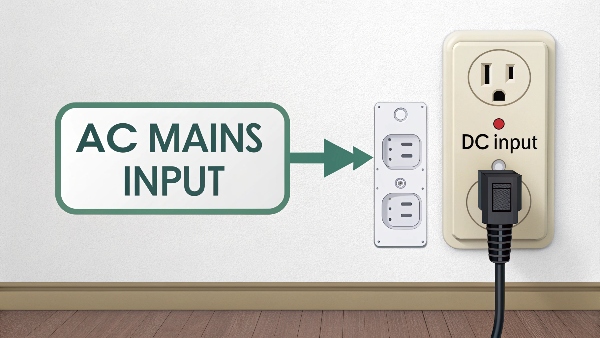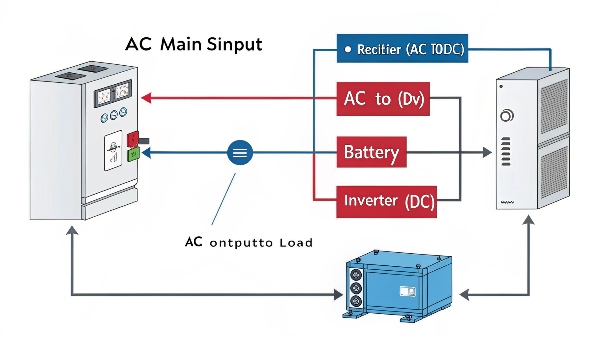Power flickers, equipment dies, data lost. Worried about what powers your UPS? Understanding its energy source is key to reliable backup for your valuable systems.
A UPS primarily uses mains AC power from your wall outlet as its input source. It internally converts this to DC to charge its batteries and then, especially in online models, converts it back to clean AC power for your connected devices.

At Daopulse, we've spent a decade designing and manufacturing uninterruptible power supplies. I've seen many configurations and understand that the journey of electricity through a UPS is fundamental to its protective capabilities. For our clients, like Mr. Li, a Procurement Manager at a Hospital Infrastructure Company, knowing these details ensures they select and deploy the right power solutions for critical applications. Let's explore this more deeply.
Can you use a UPS battery in a bike?
Got an old UPS battery lying around? Thinking of a DIY project, maybe repurposing it for an electric bike? Before you start tinkering, it's important to understand the differences.
Generally, no, you should not use a typical UPS battery in an electric bike. UPS batteries, usually Sealed Lead-Acid (SLA), are designed for standby power, not the demanding, deep-cycle performance that e-bike motors require.

Over my years at Daopulse, I've heard a few creative ideas for repurposing components, but this one comes with significant caveats. UPS batteries and e-bike batteries are engineered for very different jobs.
Most UPS systems, especially older or more common models, use Sealed Lead-Acid (SLA) batteries. These batteries excel at providing a high burst of power for a short duration – perfect for bridging a power gap until generators kick in or systems can be shut down safely. They are designed for "standby" or "float" service, meaning they spend most of their life fully charged, waiting for an outage.
Electric bike batteries, on the other hand, are almost always Lithium-ion based (like LiFePO4, which we also use in some of our advanced UPS solutions, or NMC). They need to be:
- Deep-cycle: Capable of being discharged significantly and recharged many times. SLA batteries degrade quickly under such use.
- High continuous discharge: E-bike motors draw a lot of current for extended periods. UPS SLA batteries are not built for this sustained high drain.
- Lightweight: Weight is a major factor for e-bikes. SLA batteries are very heavy for their capacity.
- Specific Voltage/Capacity: E-bike systems are designed for specific battery pack voltages and capacities.
Trying to use a UPS SLA battery in an e-bike could lead to extremely short range, a very short battery lifespan, damage to the battery (overheating), and potentially damage to the e-bike's motor or controller. It's also a safety concern. We carefully select battery chemistries for our UPS units to match their intended application, ensuring reliability and safety, just as e-bike manufacturers do for their products.
| Feature | Typical UPS SLA Battery | Typical E-Bike Lithium Battery |
|---|---|---|
| Primary Design | Standby, float service | Deep cycle, motive power |
| Discharge Profile | High burst, short duration | Sustained high current |
| Cycle Life | Low (if deep cycled) | High (many deep cycles) |
| Weight | Heavy per unit of energy | Lighter per unit of energy |
| Voltage Sag | Can be significant under load | Generally less sag |
Does UPS need a power supply?
A UPS is there to supply power to your devices when the main source fails. But does the UPS itself need its own power supply to function? It's a good question.
Yes, in a way, a UPS is a sophisticated power supply system. It contains internal components like a rectifier/charger (which acts as a power supply for its batteries) and an inverter (which supplies power to your equipment).

It's helpful to think of a UPS not as a simple box, but as a multi-stage power processing device. At Daopulse, when we design and manufacture UPS systems, we are essentially building several specialized power supplies that work together.
Here's a breakdown:
- Rectifier/Charger: This section takes the incoming AC power from the wall outlet and converts it into DC power. This DC power does two things:
- It charges the UPS's internal batteries.
- In an online UPS, it continuously provides DC power to the inverter.
So, the rectifier/charger acts as a power supply for the battery and the inverter stage.
- Battery: The battery stores this DC energy.
- Inverter: This section takes DC power (either from the rectifier/charger in an online UPS or from the battery during an outage) and converts it back into clean AC power that your connected devices can use. The inverter, therefore, acts as the power supply for your load equipment.
So, while a UPS doesn't need an external, separate box labeled "power supply" plugged into it (other than the main AC cord), its internal architecture is full of power conversion and regulation components that perform power supply functions. An online UPS, for example, is constantly re-creating the power supplied to your devices. It is, in essence, a power supply that also has its own backup energy source (the battery) and the intelligence to manage it all.
What is the input source of UPS?
Your UPS is a guardian for your electronics. But where does it draw its own power from to stand guard and recharge? Knowing this is key for proper setup.
The primary input source for almost all common UPS systems is AC (Alternating Current) mains electricity, typically from a standard wall outlet. Some specialized UPS units can accept DC input.

The vast majority of uninterruptible power supplies you'll encounter, from small desktop units to large systems for data centers that we at Daopulse manufacture, are designed to be powered by the AC mains electricity provided by your utility company. This is the electricity that comes out of your standard wall sockets. The voltage (e.g., 110V, 120V, 220V, 230V, 240V) and frequency (50Hz or 60Hz) will depend on your geographical location. Our UPS designs account for these international variations.
My insight is that the input power source for an uninterruptible power supply is generally mains power, but of course, it can also be battery power. To clarify this: the external primary input is AC mains. The UPS then uses this to power the load and/or charge its internal batteries. When the mains fail, the UPS internally switches to its battery as the source to power the inverter, which then powers your load. So, the battery acts as an internal intermediate power source.
There are also specialized UPS systems:
- DC-Input UPS1: Some UPS units, often found in telecommunications or specific industrial settings, are designed to take a DC input (e.g., from a large DC power plant or rectified bulk power supply) and then provide AC or DC output.
- Solar-Compatible UPS Setups: While not a direct input to most standard UPS units, solar panel systems can be used to charge battery banks, and a UPS could then run from an inverter powered by that solar-charged battery bank, or some UPS systems are designed to integrate more directly with renewable energy sources.
For most users, including procurement managers like Mr. Li sourcing for hospital infrastructure, ensuring a stable, properly grounded AC mains connection is the critical first step. For our three-phase UPS systems2, this involves connecting to the building's three-phase electrical distribution.
For most users, including procurement managers like Mr. Li sourcing for hospital infrastructure, ensuring a stable, properly grounded AC mains connection is the critical first step. For our three-phase UPS systems, this involves connecting to the building's three-phase electrical distribution.
Is UPS power AC or DC?
You plug your AC-powered computer into a UPS. The UPS has a battery, which is DC. So, what kind of power is the UPS actually dealing with and providing?
A UPS takes AC power as input from the mains. Internally, it converts this to DC to charge its battery and for power conditioning. It then outputs AC power to your connected devices.

Understanding the flow of AC (Alternating Current) and DC (Direct Current) within a UPS is key to understanding how it works. Here’s the journey:
- AC Input: The UPS plugs into your wall outlet, which supplies AC power. AC power is what utility companies distribute because it's efficient to transmit over long distances. Your computers, monitors, and most office equipment are designed to run on AC power.
- Rectification (AC to DC): Inside the UPS, the first major step is often a rectifier. This component converts the incoming AC power into DC power. This DC power is used for two main things:
- To charge the UPS's internal battery (batteries store energy as DC).
- In an online UPS (also known as a double-conversion UPS), this DC power is also used to continuously feed the inverter.
- Battery (DC Storage): The battery stores electrical energy in DC form.
- Inversion (DC to AC): The inverter is the heart of the UPS's output stage. It takes DC power (either from the battery during an outage, or from the rectifier in an online UPS) and converts it back into AC power. This AC output is what your connected equipment uses.
So, a UPS handles both AC and DC internally:
- Input: AC
- Internal (Charging/Battery/Online UPS intermediate stage): DC
- Output: AC
At Daopulse, we pay close attention to the quality of the AC output waveform from our inverters. Many sensitive electronics prefer a "pure sine wave" AC output, which closely mimics utility power, rather than a "simulated" or "modified" sine wave that some simpler UPS types produce. This ensures compatibility and stable operation for the connected load. The journey from AC mains, through internal DC conversion and storage, back to clean AC output is what provides the protection.
Conclusion
A UPS primarily draws AC power from the mains, converts it to DC for its battery system, and then delivers reliable AC power to safeguard your critical equipment.

